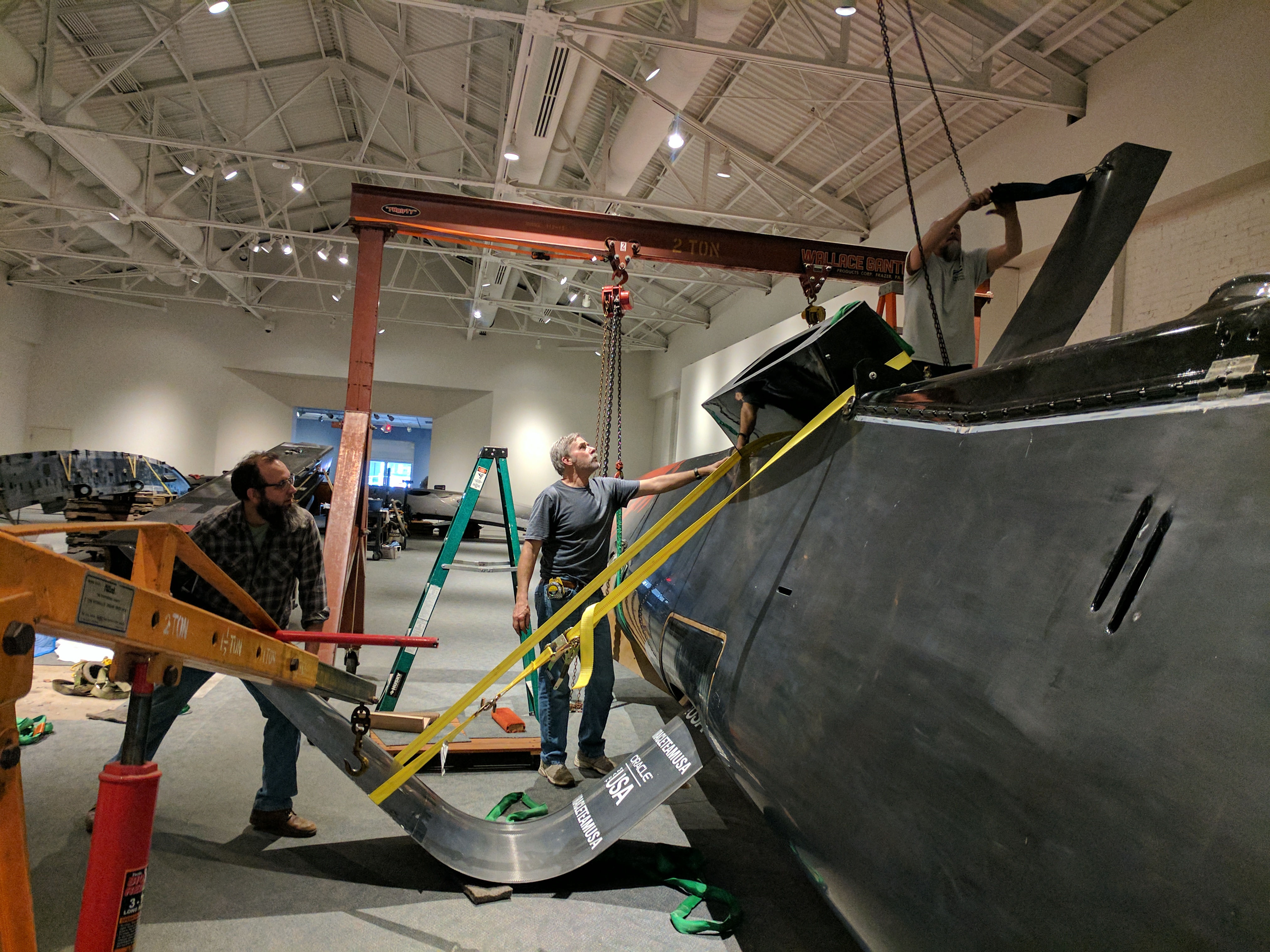Because of ceiling height limitations in the America’s Cup gallery we knew the first step in the assembly process of the AC72 needed to be the mounting of the J-shaped daggerboards (foils). We couldn’t lift the hulls high enough nor stand the foils up (each weighs about 800 lbs) and unfortunately, both of the daggerboard compartments had been completely emptied of the cages and systems that held the daggerboards in place so we decided to take a slightly different approach.
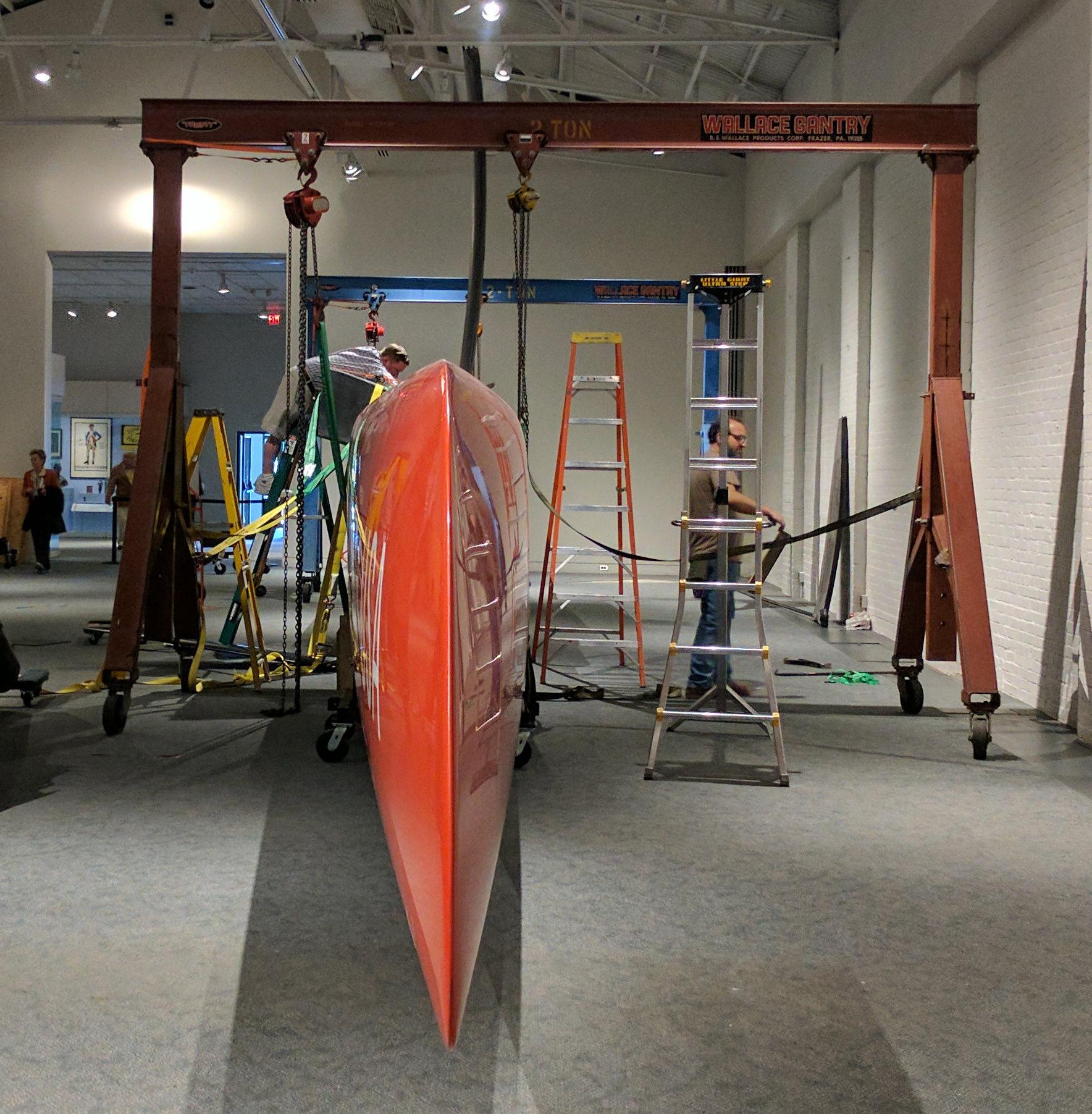
Using our 2- and 3-ton gantry lifts and a system of ratchet straps we would raise each hull and roll them over on their sides approximately 45 or 50 degrees which would give us the ability to fish each foil through the bottom of the daggerboard compartment. We started with the port foil and quickly discovered that it was going to be difficult to control the movement of the foil as we fed it through the hull. The foil would cant and rake however and whenever it pleased which meant we had to continually fight against its desire to slip back out of the hull. We solved the problem initially with a few ratchet straps attached to strategic points on the foil but knew we needed to come up with a better way of mounting the second foil.
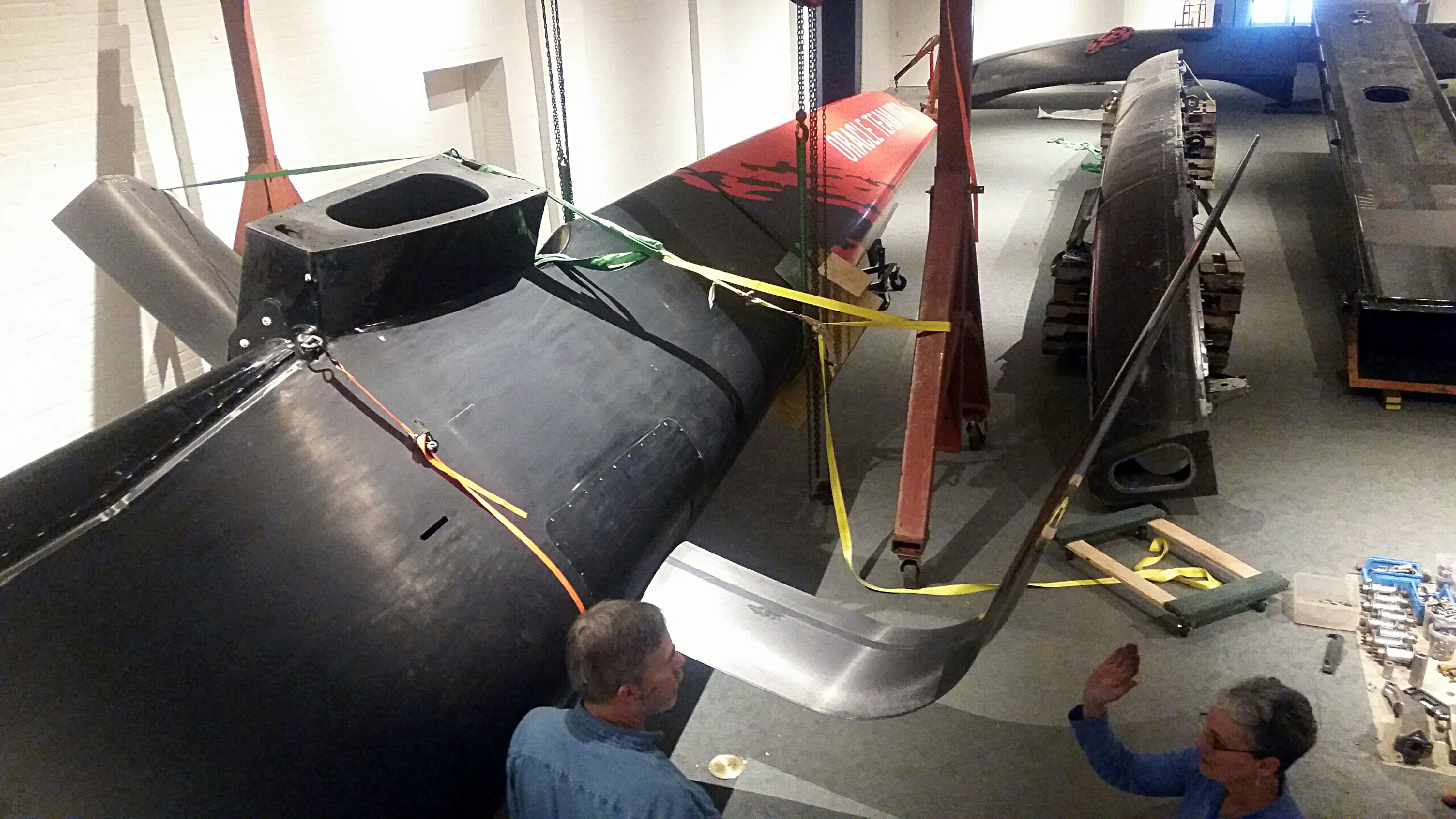
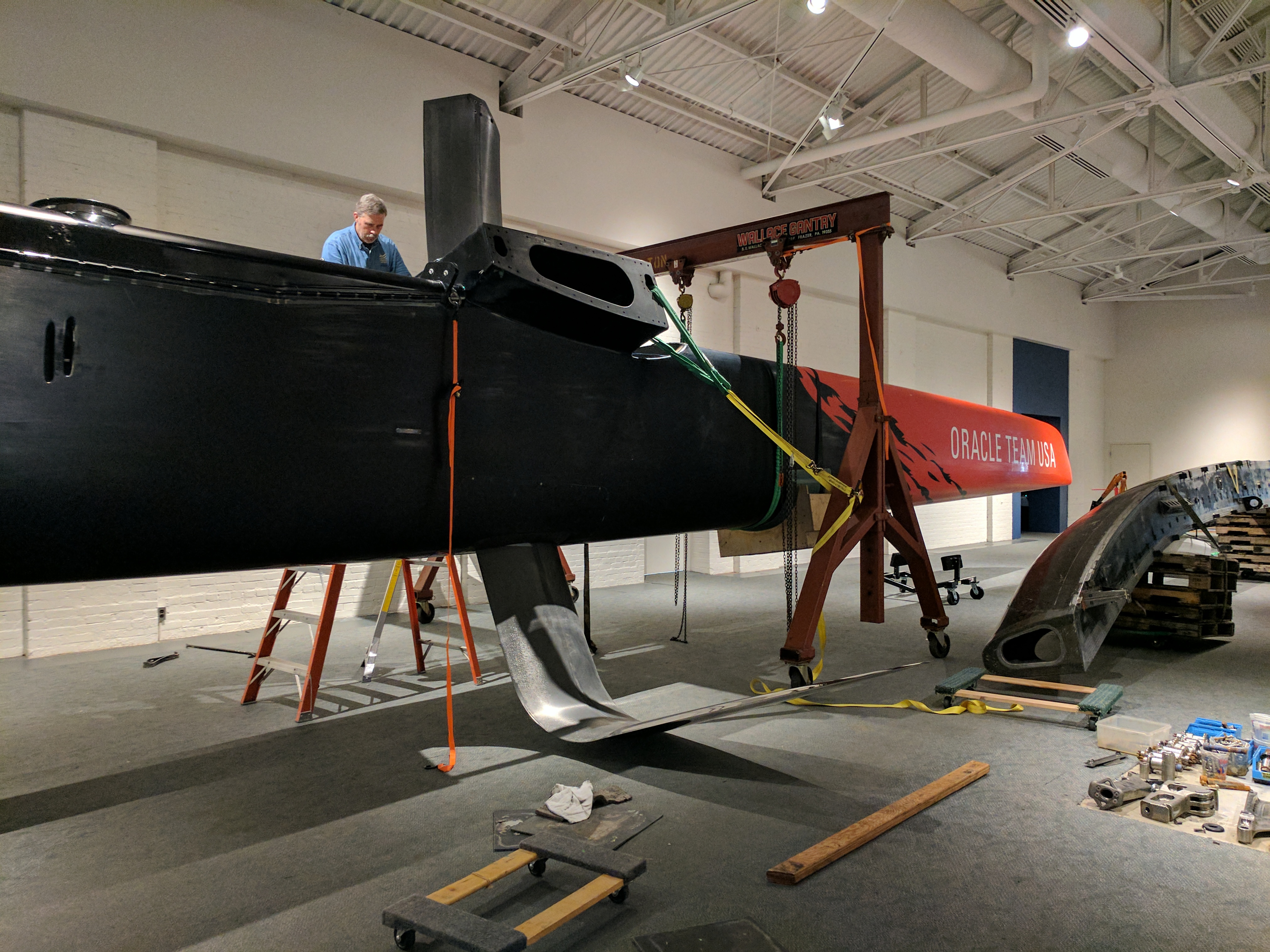
Once the port foil was installed Chris went about designing a “cage” and “track” system for the starboard foil that would help stabilize it as we guided it through the hull. We also took advantage of some of the foil’s original lifting points to rig a harness we could connect to the gallery ceiling with a chain fall. This would not only help us raise the foil but will also be used to stabilize the daggerboards once they are placed in their exhibition viewing position.
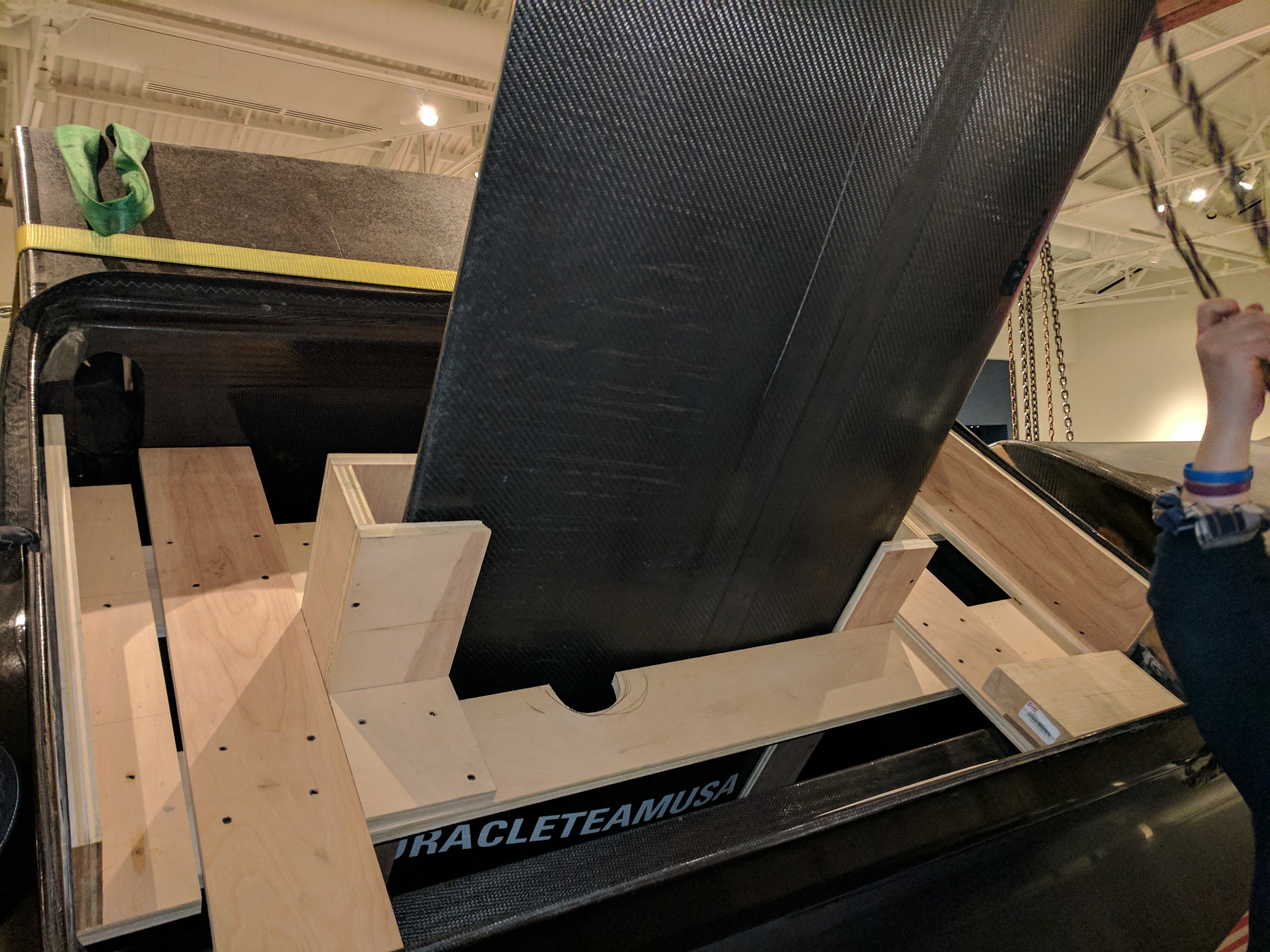
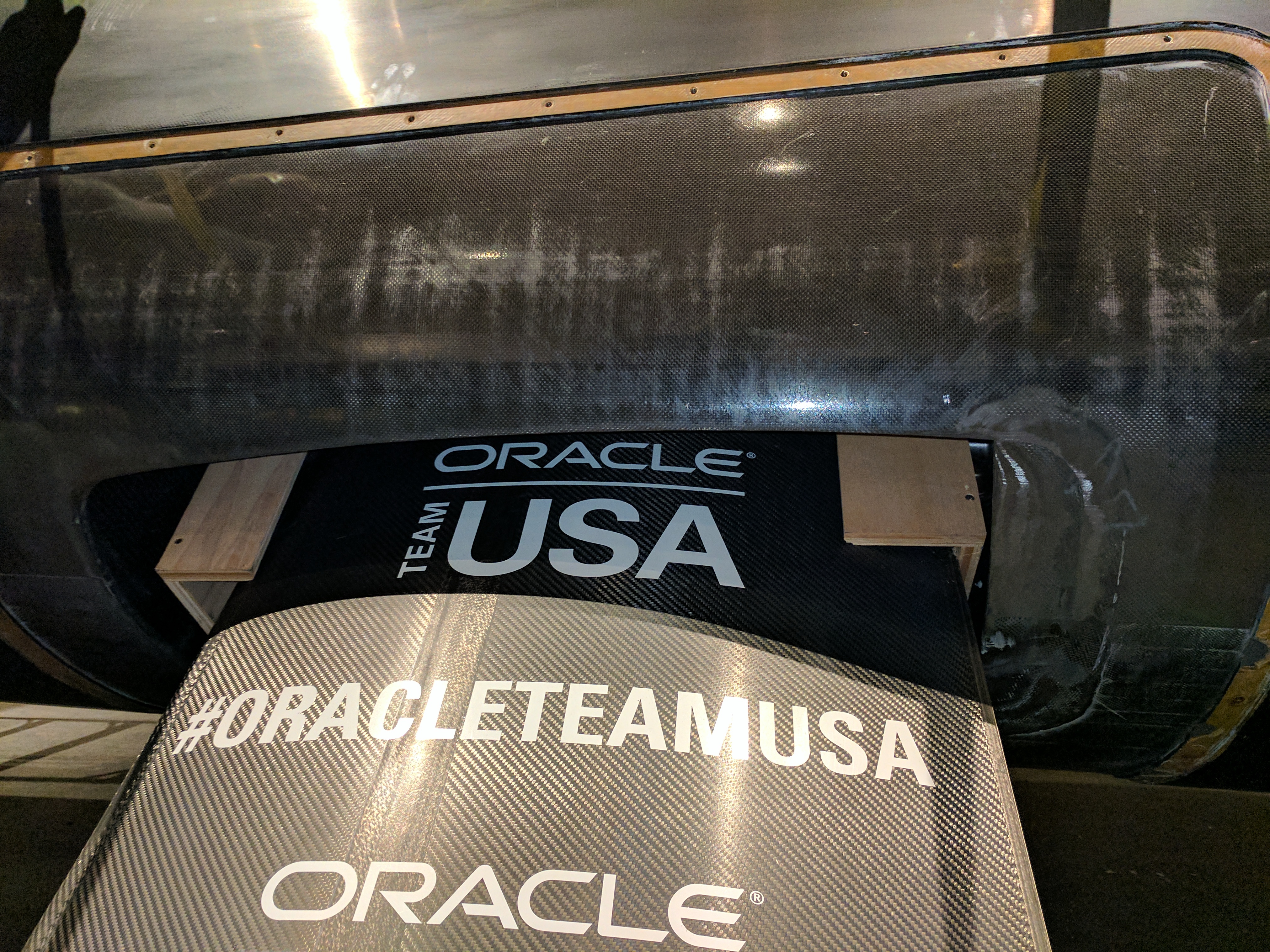
After all of this preparation, mounting the second foil proved much less traumatic. In fact, it worked so well that Chris installed a partial cage around the port foil to minimize that foil’s desire to cant and rake at will. For the exhibition, we will leave one of the foils near the gallery floor while the other will be lifted, canted towards the central crossbeam and raked towards the stern so that we can help explain the foil’s movement during sailing. This will also give visitors the opportunity to study the hydrodynamically beautiful shape of the foil.
